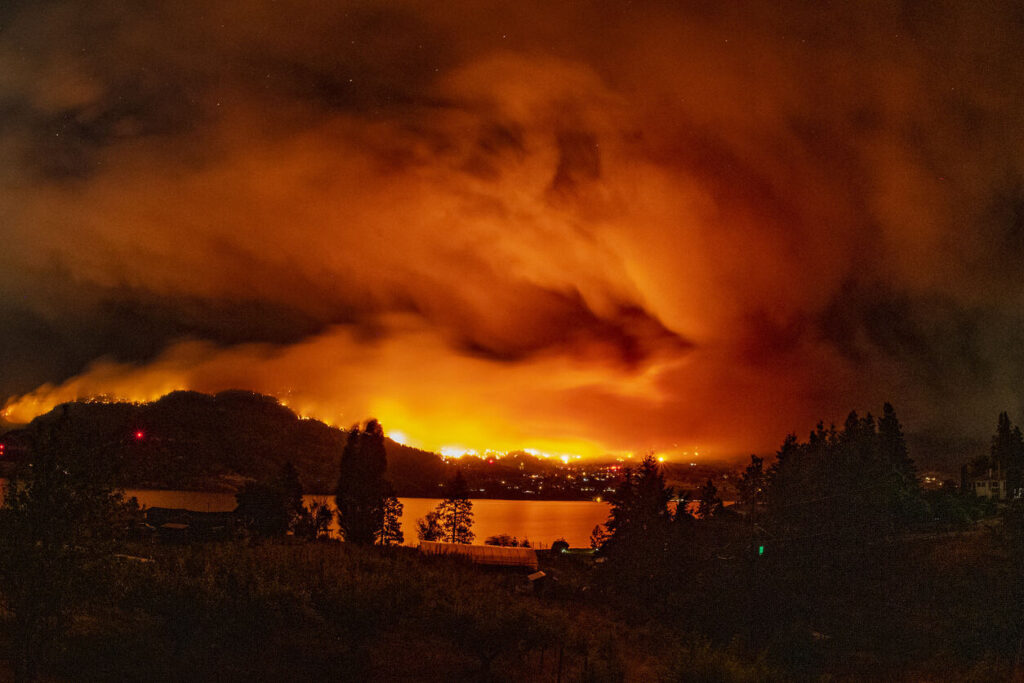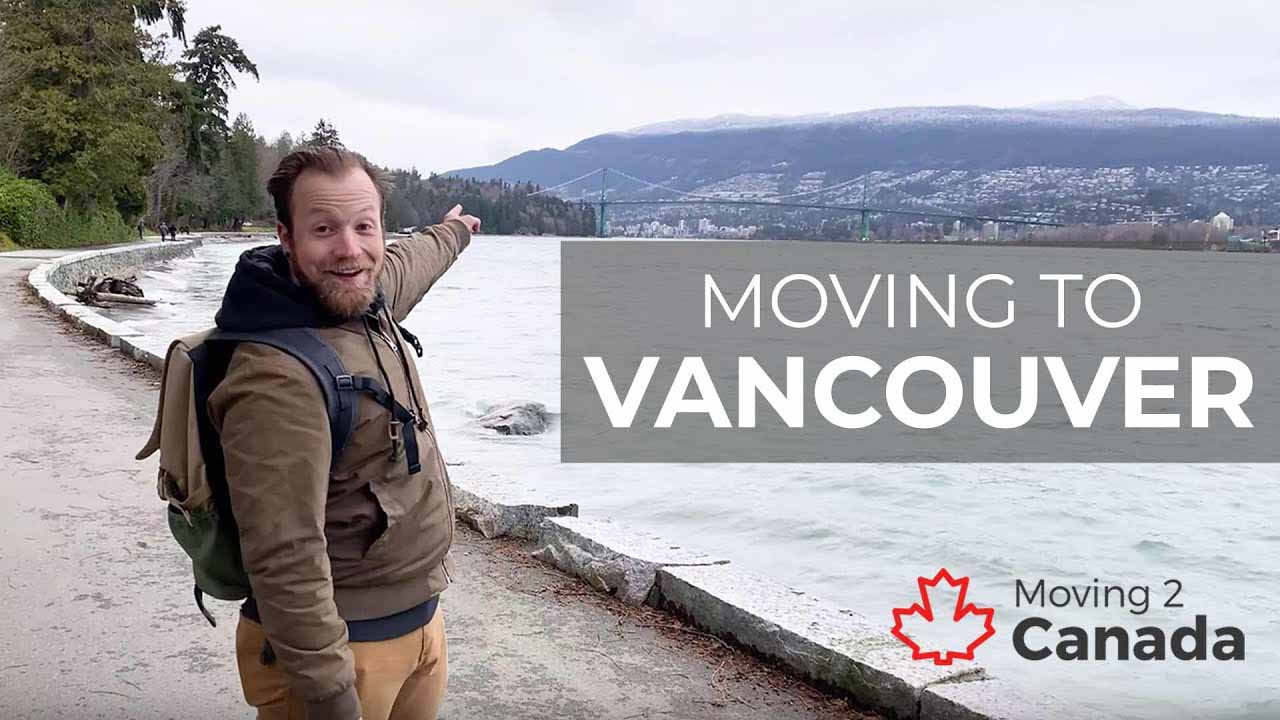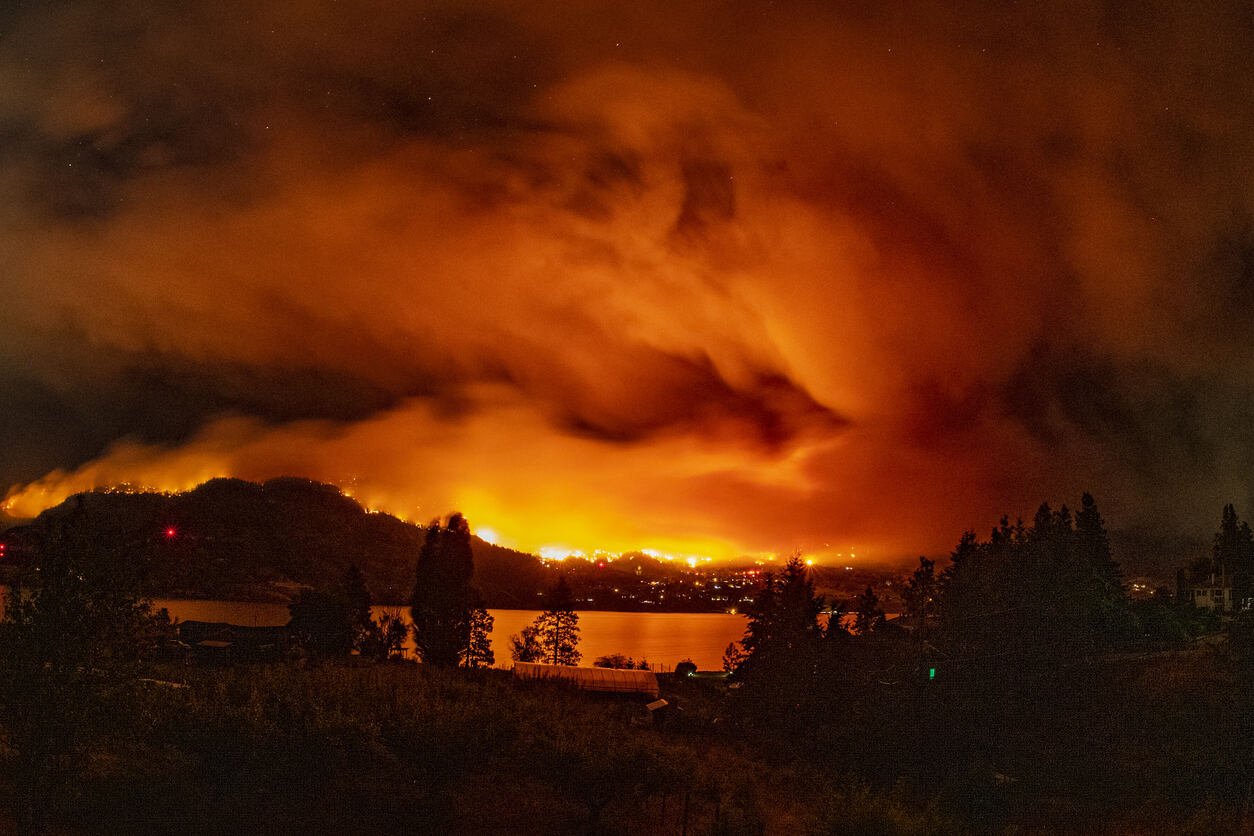Get immigration help you can trust.
Find the best immigration programs for you
Advertisement
By Rebecca Major
Updated on May 3, 2024
Archived content
Please note that this article has been archived. The information contained may be out of date.
Update — November 5, 2021 — The TR to PR pathway streams are closed as of November 5 after the Government of Canada opted not to extend the application intake period. The information below is for reference only, as you will not be able to submit an application once the program closes.
The TR to PR pathway applicant portal can be accessed here.
Update — July 26, 2021 — Canada has introduced a new open work permit program for individuals who have applied through the recently opened TR to PR pathway to permanent residence for essential workers and international graduates. Similar to the Bridging Open Work Permit (BOWP), this new open work permit program enables applicants whose work permits are expiring within four months to apply for a new open work permit. This will allow TR to PR pathway applicants to continue working while their permanent residence is being processed.
The new open work permit program is accepting applications as of July 26, 2021. In order to qualify for this one-time open work permit, applicants must show that they:
- have successfully submitted an application under one of the new permanent residence pathway’s streams
- held a valid work permit, or were authorized to work without a work permit, at the time their permanent residence application was submitted
- hold a valid work permit that is set to expire within the next 4 months
- have temporary resident status, maintained status or are eligible to restore their status at the time their open work permit application is submitted
- are in Canada at the time their open work permit application is submitted
- were employed in any occupation at the time their permanent residence application was submitted
- meet the language requirements of the stream under which they applied at the time their permanent residence application was submitted
Full details on the new open work permit program, including details on how to apply, can be found on the IRCC website here.
Overview of the TR to PR pathway
Canada’s new permanent residence pathways for essential workers and graduates, known as the TR to PR pathway, is a response to Canada’s need for immigration as a means to help grow the economy and add much-needed talent and labour to the workforce.
For eligible workers, the TR to PR pathway is an exciting, and perhaps unexpected, way to transition to permanent residence in Canada from their current temporary status (hence “TR to PR”).
More than 90,000 temporary residents in Canada have the opportunity to become permanent residents this year through six new TR to PR pathway immigration pathways that officially launched on May 6. These new Canadian immigration pathways target essential workers, international students, and French speakers. These new TR to PR pathway immigration programs further Canada’s initiative to help more temporary residents in Canada to remain in the country permanently.
Check your eligibility for Canada’s TR to PR pathway programs by completing the assessment form on this page! This form was designed by Deanne Acres-Lans, one of our recommended Canadian immigration consultants and founder of Canada Abroad.
The TR to PR pathway programs were announced on April 14 by Marco Mendicino, Canada’s immigration minister. The programs will accept applications until November 5, 2021, or until the program quota is reached. You can view the spaces remaining in each stream here.
Notably, French-speaking candidates are exempt from the quotas. The new pathways are deemed “temporary public policies,” which suggests that they may not be permanent fixtures in the landscape of immigration — although an extension is always possible.
TR to PR pathway applicants are eligible to apply with their spouse or partner and dependent children, giving families the opportunity to obtain Canadian permanent residence together.
Skip ahead to view the eligibility criteria and application process you’re most interested in.
What you'll find on this page
Eligibility for Canada’s TR to PR immigration streams for essential workers
Essential workers, who have been critical to Canada’s ongoing management of the COVID-19 pandemic, will be eligible to apply through two different streams: one for temporary workers in 40 health care occupations — which has a quota of 20,000, and one for temporary workers in 95 other essential services occupations — which has a quota of 30,000. You can view the spaces remaining in each stream here.
French-speakers have their own additional streams — the criteria are identical, except for the French-language requirement, and French-speakers are exempt from the quotas.
Canadian work experience
To apply through the essential workers immigration streams, candidates must have at least one year of full-time work experience, or an equivalent amount in part-time experience (1,560 hours), gained within Canada in the three years prior to submitting an application.
For the healthcare workers stream, the Canadian work experience must be in one or more of the eligible healthcare occupations. For the non-healthcare workers streams, the Canadian work experience must be in one or more of the eligible non-healthcare occupations (experience in the healthcare occupations can also be combined to apply through this stream).
For TR to PR pathway eligible occupations, please refer to the lists at the bottom of this page.
Current employment in Canada
Candidates must be currently employed in Canada at the time they apply. Notably, this current employment can be in any occupation — it does not have to be in an occupation on one of the eligible occupation lists. As well, the government guidelines do not specify that the current employment needs to be full-time, suggesting that part-time employment will be sufficient.
Language Proficiency
Candidates must submit results from an approved language test in either English or French showing results consistent with the Canadian Language Benchmark of Level 4 (CLB 4). Remember, French-speakers are exempt from the program quotas.
Other criteria
In addition to the eligibility criteria listed above, candidates must meet the following criteria:
- be in Canada on valid status (or eligible to restore status),
- be physically present in Canada at the time the application is submitted and at the time the application is approved,
- have the intention to reside outside the province of Quebec, and
- be criminally and medically admissible to Canada.
Eligibility for Canada’s TR to PR pathway immigration streams for international graduates
These TR to PR pathway streams are for international graduates from Canadian post-secondary schools. The stream for English-speakers reached its quota of 40,000 applications and is now closed. French-speakers are exempt from the quota and can apply at any time while the applications are open between May 6 and November 5, 2021.
Qualifying Canadian educational credential
To apply through the international graduates stream, candidates must have completed a program of study at an eligible institution in Canada no earlier than January 2017. Only the following types of educational credentials are eligible:
- a degree issued upon completion of a program at least 8 months in duration
- a degree, diploma, certificate, or attestation issued upon completion of a program of any duration, so long as it has lead to an occupation in a skilled trade (refer to the list of eligible trades occupations at the bottom of this page)
- one more diplomas/certificates/attestations where the following conditions are met:
- For diplomas/certificates/attestations, each program of study must be at least 8 months in duration and the combined length of the credential(s) must be equivalent to a two-year credential (at least 16 months in duration).
- For the DVS and AVS, each program of study must be at least 900 hours in duration and the combined program of study must be at least 1,800 hours in duration.
Current employment in Canada
Candidates must be currently employed in Canada at the time they apply with a valid permit or authorization to work. Notably, this current employment can be in any occupation. As well, the government guidelines do not specify that the current employment needs to be full-time, suggesting that part-time employment will be sufficient.
Language Proficiency
Candidates must submit results from an approved language test in either English or French showing results consistent with the Canadian Language Benchmark of Level 5 (CLB 5). Remember, French-speakers are exempt from the program quotas. All applicants need to submit language test results, even if their qualifying educational credential is for an english program.
Other criteria
In addition to the eligibility criteria listed above, candidates must meet the following criteria:
- be in Canada on valid status (or eligible to restore status),
- be physically present in Canada at the time the application is submitted and at the time the application is approved,
- have the intention to reside outside the province of Quebec, and
- be criminally and medically admissible to Canada.
Application procedure and required documents for the essential workers and graduates programs
Eligible candidates can submit applications online using IRCC’s new online application portal — accessible here. The programs will accept applications between May 6 and November 5, 2021, or until program quotas are filled. You can view the spaces remaining in each stream here. The English-speaking stream for international graduates has reached its quota of 40,000 and is now closed. All other streams remain open.
The application guide for Canada’s TR PR pathway is now available here on the Government of Canada website. This guide includes detailed instructions regarding required documentation and application procedure.
The application process will be broken down into four steps:
Step 1 — Gather supporting documents
When applicants sign up for IRCC’s online application portal, a document checklist will be generated based on the applicant’s profile. All TR to PR pathway applicants will require the following documents:
- Proof of entry and status in Canada
- Proof of current employment in Canada (work permit — if applicable, employer reference letter, pay stubs)
- Proof of language proficiency (approved language test results less than two years old)
- Passports (biodata page)
- Immigration Medical Exams (IME)
- If applicants are having difficulty getting an IME prior to applying, they may provide proof that a medical exam is scheduled (including the name of the panel physician and date/time of the appointment), or a letter of explanation of best efforts. Please note that substitute documents will be accepted at the discretion of the officer assessing the file.
- Police clearance certificates
- Please refer to our guide on police certificates for Express Entry, as the requirements are the same.
- If applicants are having difficulty getting police certificates prior to applying, they may accept proof of having requested a police certificate and an explanation of best efforts (not a guarantee of acceptance). Please note that substitute documents will be accepted at the discretion of the officer assessing the file.
- Photos
For the essential workers stream, all applicants must submit proof of qualifying Canadian work experience in an eligible occupation:
- A copy of the work permit (if applicable)
- Employer reference letters for the periods of qualifying work, including:
- location of work
- period of employment (to/from dates)
- description of main duties and responsibilities (matching an eligible National Occupational Classification code)
- salary and benefits
- hours worked per week
- employer’s name, signature, address, telephone number, and email
- Applicants must also include:
- copies of T4 tax slips and Notice of Assessment (if applicable); or
- work contracts; or
- pay stubs
For the international graduates stream, all applicants must submit proof of their qualifying Canadian educational credential:
- Applicants must provide:
- A final transcript, and
- A letter from the institution and/or the formal notice of graduation
- Applicants must provide proof that shows:
- The type of credential granted (degree, diploma, certificate, or attestation)
- The length (in weeks, months, or years) of the program of study,
- That you were authorized to study for the duration of studies,
- the date of completion;
- the name of the school that granted the degree, diploma, certificate, or attestation.
Additional documents may be required depending on the profile of the applicant. These may include identity and civil status documents, documents relating to family members and familial relationships, etc.
Any documents submitted in a language other than English or French much be accompanies by a certified translation.
Step 2 — Complete the application
Once candidates have registered for the TR to PR pathway application portal, they will be required to submit personal information, upload supporting documents, and complete and upload a variety of required forms. Forms can be completed by downloading them onto a computer and completing the required fields.
All applicants will be required to submit the following immigration forms:
- Generic Application Form for Canada [IMM 0008] (PDF, 0.6 MB)
- Schedule A – Background/Declaration [IMM 5669] (PDF, 1.5 MB)
- Additional Family Information [IMM 5406] (PDF, 2.3 MB)
- Schedule 3 – Temporary Resident to Permanent Resident Pathway: Streams A & B and International Graduates [IMM 0130] (PDF, 1.20 MB)
- Supplementary Information – Your travels [IMM 5562] (PDF, 1.5 MB)
If applicable, applicants will be required to submit the following immigration forms:
- Additional Dependants/Declaration [IMM 0008 DEP] (PDF, 0.4 MB), if applicable
- Separation Declaration for Minors Travelling to Canada [IMM 5604] (PDF, 1.6 MB), if applicable
- Statutory Declaration of Common-law Union [IMM 5409] (PDF, 0.8 MB), if applicable
- Use of a Representative [IMM 5476] (PDF, 1.5 MB), if applicable
Step 3 — Pay the fees
Once a TR to PR pathway application is complete (and you’ve double- and triple-checked everything!), you must pay the required fees.
- Your permanent residence fees (principal applicant): CAD$1,050 (includes a $550 processing fee and a $500 right of permanent residence fee)
- Spouse or partner’s permanent residence fees (if applicable): CAD$1,050 (includes a $550 processing fee and a $500 right of permanent residence fee)
- Dependent children’s fees, per child (if applicable): CAD$150
- Biometrics fees: CAD$85 for a single applicant, or CAD$170 for a family
All fees must be paid at the time of submission — if your application is refused you will received a refund, but only of the $500 right of permanent residence fees paid by adult applicants.
You must pay your fees online and keep a copy of your receipt. You must upload a copy of this receipt to your application when asked.
Step 4 — Submit the application
When ready, applicants can submit the application. Currently, it is not known how long application processing will take for these programs.
Why are Canada’s TR to pathway immigration programs important?
Minister Mendicino spoke about the importance of recognizing the incredible contribution of temporary residents in Canada, especially through the challenges of the past year: “The pandemic has shone a bright light on the incredible contributions of newcomers. These new policies will help those with a temporary status to plan their future in Canada, play a key role in our economic recovery and help us build back better.”
Canada doubles-down on commitment to in-Canada immigration applicants
In November of last year, Canada announced the most ambitious immigration targets in Canadian history, with a goal to welcome more than 400,000 new permanent residents in 2021, with even higher targets for 2022 and 2023. At that time, Minister Mendicino made it clear that in order to achieve those targets during a pandemic, with international travel restrictions in full effect, Canada would introduce innovative ways to prioritize permanent residence applications from temporary residents who are already in Canada.
In the first four months of 2021, Minister Mendicino has led Canada’s immigration department to do exactly that.
In January, Canada created a new open work permit program for international graduates to remain in Canada and work. In February, Canada invited every single candidate in the Canadian Experience Class (CEC) of Express Entry — more than 27,000 candidates. Then, Canada launched six new streams that are expected to admit more than 90,000 new permanent residents: the TR to PR pathway.
Canada’s remains committed to high-levels of immigration, even during a year in which the economy has been shaken by a pandemic. This is because immigration is essential to Canada’s long-term economic growth — as the rate of natural population increase (population increase based on birth rate alone) continues to fall. Minister Mendicino made it clear that immigration is also essential to Canada’s short-term economic recovery from COVID, “We need workers who possess a range of skills in a range of sectors within our economy to keep it going forward and accelerate our economic recovery.”
In a year like no other in Canadian history, the immigration sector continues to innovate and adapt in ways that recognize the contributions of newcomers to Canadian society. While we cannot say what’s in store for the next few months, it’s clear that the next few years will be enriched by the contributions of these many newcomers who are being given the chance to make Canada their home.
Be the first to find out about Canadian immigration news: Create a free Moving2Canada account and subscribe to our newsletter!
Eligible Health occupations
| Occupation | NOC |
|---|---|
| Nursing co-ordinators and supervisors | 3011 |
| Registered nurses and registered psychiatric nurses | 3012 |
| Specialist physicians | 3111 |
| General practitioners and family physicians | 3112 |
| Dentists | 3113 |
| Optometrists | 3121 |
| Chiropractors | 3122 |
| Allied primary health practitioners | 3124 |
| Other professional occupations in health diagnosing and treating | 3125 |
| Pharmacists | 3131 |
| Dietitians and nutritionists | 3132 |
| Audiologists and speech-language pathologists | 3141 |
| Physiotherapists | 3142 |
| Occupational therapists | 3143 |
| Other professional occupations in therapy and assessment | 3144 |
| Medical laboratory technologists | 3211 |
| Medical laboratory technicians and pathologists' assistants | 3212 |
| Respiratory therapists, clinical perfusionists and cardiopulmonary technologists | 3214 |
| Medical radiation technologists | 3215 |
| Medical sonographers | 3216 |
| Cardiology technologists and electrophysiological diagnostic technologists, n.e.c. | 3217 |
| Other medical technologists and technicians (except dental health) | 3219 |
| Denturists | 3221 |
| Dental hygienists and dental therapists | 3222 |
| Dental technologists, technicians and laboratory assistants | 3223 |
| Opticians | 3231 |
| Practitioners of natural healing | 3232 |
| Licensed practical nurses | 3233 |
| Paramedical occupations | 3234 |
| Massage therapists | 3236 |
| Other technical occupations in therapy and assessment | 3237 |
| Dental assistants | 3411 |
| Nurse aides, orderlies and patient service associates | 3413 |
| Other assisting occupations in support of health services | 3414 |
| Psychologists | 4151 |
| Social workers | 4152 |
| Family, marriage and other related counsellors | 4153 |
| Health policy researchers, consultants and program officers | 4165 |
| Social and community service workers | 4212 |
| Home support workers, housekeepers and related occupations | 4412 |
Other non-health essential occupations
| Unit Group | Occupation | NOC Code |
|---|---|---|
| Sales support occupations | Cashiers | 6611 |
| Service station attendants | 6621 | |
| Store shelf stockers, clerks and order fillers | 6622 | |
| Other sales related occupations | 6623 | |
| Industrial, electrical and construction trades | Contractors and supervisors, machining, metal forming, shaping and erecting trades and related occupations | 7201 |
| Contractors and supervisors, electrical trades and telecommunications occupations | 7202 | |
| Contractors and supervisors, pipefitting trades | 7203 | |
| Contractors and supervisors, carpentry trades | 7204 | |
| Contractors and supervisors, other construction trades, installers, repairers and servicers | 7205 | |
| Machinists and machining and tooling inspectors | 7231 | |
| Tool and die makers | 7232 | |
| Sheet metal workers | 7233 | |
| Boilermakers | 7234 | |
| Structural metal and platework fabricators and fitters | 7235 | |
| Ironworkers | 7236 | |
| Welders and related machine operators | 7237 | |
| Electricians (except industrial and power system) | 7241 | |
| Industrial electricians | 7242 | |
| Power system electricians | 7243 | |
| Electrical power line and cable workers | 7244 | |
| Telecommunications line and cable workers | 7245 | |
| Telecommunications installation and repair workers | 7246 | |
| Cable television service and maintenance technicians | 7247 | |
| Plumbers | 7251 | |
| Steamfitters, pipefitters and sprinkler system installers | 7252 | |
| Gas fitters | 7253 | |
| Carpenters | 7271 | |
| Cabinetmakers | 7272 | |
| Bricklayers | 7281 | |
| Concrete finishers | 7282 | |
| Tilesetters | 7283 | |
| Plasterers, drywall installers and finishers and lathers | 7284 | |
| Roofers and shinglers | 7291 | |
| Glaziers | 7292 | |
| Insulators | 7293 | |
| Painters and decorators (except interior decorators) | 7294 | |
| Floor covering installers | 7295 | |
| Other installers, repairers and servicers and material handlers | Residential and commercial installers and servicers | 7441 |
| Waterworks and gas maintenance workers | 7442 | |
| Pest controllers and fumigators | 7444 | |
| Other repairers and servicers | 7445 | |
| Longshore workers | 7451 | |
| Material handlers | 7452 | |
| Transport and heavy equipment operation and related maintenance occupations | Transport truck drivers | 7511 |
| Bus drivers, subway operators and other transit operators | 7512 | |
| Taxi and limousine drivers and chauffeurs | 7513 | |
| Delivery and courier service drivers | 7514 | |
| Heavy equipment operators (except crane) | 7521 | |
| Public works maintenance equipment operators and related workers | 7522 | |
| Railway yard and track maintenance workers | 7531 | |
| Water transport deck and engine room crew | 7532 | |
| Boat and cable ferry operators and related occupations | 7533 | |
| Air transport ramp attendants | 7534 | |
| Other automotive mechanical installers and servicers | 7535 | |
| Trades helpers, construction labourers and related occupations | Construction trades helpers and labourers | 7611 |
| Other trades helpers and labourers | 7612 | |
| Public works and maintenance labourers | 7621 | |
| Railway and motor transport labourers | 7622 | |
| Harvesting, landscaping and natural resources labourers | Harvesting labourers | 8611 |
| Landscaping and grounds maintenance labourers | 8612 | |
| Aquaculture and marine harvest labourers | 8613 | |
| Mine labourers | 8614 | |
| Oil and gas drilling, servicing and related labourers | 8615 | |
| Logging and forestry labourers | 8616 | |
| Mail and message distribution occupations | Mail, postal and related workers | 1511 |
| Letter carriers | 1512 | |
| Couriers, messengers and door-to-door distributors | 1513 | |
| Retail salesperson | Retail salespersons | 6421 |
| Cleaners | Light duty cleaners | 6731 |
| Specialized cleaners | 6732 | |
| Janitors, caretakers and building superintendents | 6733 | |
| Agriculture and horticulture workers | General farm workers | 8431 |
| Nursery and greenhouse workers | 8432 | |
| Other workers in fishing and trapping and hunting occupations | Fishing vessel deckhands | 8441 |
| Trappers and hunters | 8442 | |
| Machine operators and related workers in food, beverage and associated products processing | Process control and machine operators, food and beverage processing | 9461 |
| Industrial butchers and meat cutters, poultry preparers and related workers | 9462 | |
| Fish and seafood plant workers | 9463 | |
| Testers and graders, food and beverage processing | 9465 | |
| Other groups | Managers in agriculture | 821 |
| Managers in horticulture | 822 | |
| French and French Immersion Secondary school teachers (language of instruction must be French | 4031 | |
| French and French Immersion Elementary school and kindergarten teachers (language of instruction must be French) | 4032 | |
| Home child care providers | 4411 | |
| Elementary and secondary school teacher assistants | 4413 | |
| Retail butchers | 6331 | |
| Airline ticket and service agents | 6523 | |
| Ground and water transport ticket agents, cargo service representatives and related clerks | 6524 | |
| Security guards and related security service occupations | 6541 | |
| Customer services representatives - financial institutions | 6551 | |
| Other customer and information services representatives | 6552 | |
| Agricultural service contractors, farm supervisors and specialized livestock workers | 8252 | |
| Contractors and supervisors, landscaping, grounds maintenance and horticulture services | 8255 | |
| Labourers in food and beverage processing | 9617 | |
| Labourers in fish and seafood processing | 9618 |
Eligible trades occupations (for the graduates stream only)
| Major Group 72, industrial, electrical and construction trades |
|---|
| 7201 Contractors and supervisors, machining, metal forming, shaping and erecting trades and related occupations |
| 7202 Contractors and supervisors, electrical trades and telecommunications occupations |
| 7203 Contractors and supervisors, pipefitting trades |
| 7204 Contractors and supervisors, carpentry trades |
| 7205 Contractors and supervisors, other construction trades, installers, repairers and servicers |
| 7231 Machinists and machining and tooling inspectors |
| 7232 Tool and die makers |
| 7233 Sheet metal workers |
| 7234 Boilermakers |
| 7235 Structural metal and platework fabricators and fitters |
| 7236 Ironworkers |
| 7237 Welders and related machine operators |
| 7241 Electricians (except industrial and power system) |
| 7242 Industrial electricians |
| 7243 Power system electricians |
| 7244 Electrical power line and cable workers |
| 7245 Telecommunications line and cable workers |
| 7246 Telecommunications installation and repair workers |
| 7247 Cable television service and maintenance technicians |
| 7251 Plumbers |
| 7252 Steamfitters, pipefitters and sprinkler system installers |
| 7253 Gas fitters |
| 7271 Carpenters |
| 7272 Cabinetmakers |
| 7281 Bricklayers |
| 7282 Concrete finishers |
| 7283 Tilesetters |
| 7284 Plasterers, drywall installers and finishers and lathers |
| 7291 Roofers and shinglers |
| 7292 Glaziers |
| 7293 Insulators |
| 7294 Painters and decorators (except interior decorators) |
| 7295 Floor covering installers |
| Major Group 73, maintenance and equipment operation trades; |
| 7301 Contractors and supervisors, mechanic trades |
| 7302 Contractors and supervisors, heavy equipment operator crews |
| 7303 Supervisors, printing and related occupations |
| 7304 Supervisors, railway transport operations |
| 7305 Supervisors, motor transport and other ground transit operators |
| 7311 Construction millwrights and industrial mechanics |
| 7312 Heavy-duty equipment mechanics |
| 7313 Heating, refrigeration and air conditioning mechanics |
| 7314 Railway carmen/women |
| 7315 Aircraft mechanics and aircraft inspectors |
| 7316 Machine fitters |
| 7318 Elevator constructors and mechanics |
| 7321 Automotive service technicians, truck and bus mechanics and mechanical repairers |
| 7322 Motor vehicle body repairers |
| 7331 Oil and solid fuel heating mechanics |
| 7332 Appliance servicers and repairers |
| 7333 Electrical mechanics |
| 7334 Motorcycle, all-terrain vehicle and other related mechanics |
| 7335 Other small engine and small equipment repairers |
| 7361 Railway and yard locomotive engineers |
| 7362 Railway conductors and brakemen/women |
| 7371 Crane operators |
| 7372 Drillers and blasters - surface mining, quarrying and construction |
| 7373 Water well drillers |
| 7381 Printing press operators |
| 7384 Other trades and related occupations, n.e.c. |
| Major Group 82, supervisors and technical occupations in natural resources, agriculture and related production |
| 8211 Supervisors, logging and forestry |
| 8221 Supervisors, mining and quarrying |
| 8222 Contractors and supervisors, oil and gas drilling and services |
| 8231 Underground production and development miners |
| 8232 Oil and gas well drillers, servicers, testers and related workers |
| 8241 Logging machinery operators |
| 8252 Agricultural service contractors, farm supervisors and specialized livestock workers |
| 8255 Contractors and supervisors, landscaping, grounds maintenance and horticulture services |
| 8261 Fishing masters and officers |
| 8262 Fishermen/women |
| Major Group 92, processing, manufacturing and utilities supervisors and central control operators; |
| 9211Supervisors, mineral and metal processing |
| 9212 Supervisors, petroleum, gas and chemical processing and utilities |
| 9213 Supervisors, food and beverage processing |
| 9214 Supervisors, plastic and rubber products manufacturing |
| 9215 Supervisors, forest products processing |
| 9217 Supervisors, textile, fabric, fur and leather products processing and manufacturing |
| 9221 Supervisors, motor vehicle assembling |
| 9222 Supervisors, electronics manufacturing |
| 9223 Supervisors, electrical products manufacturing |
| 9224 Supervisors, furniture and fixtures manufacturing |
| 9226 Supervisors, other mechanical and metal products manufacturing |
| 9227 Supervisors, other products manufacturing and assembly |
| 9231 Central control and process operators, mineral and metal processing |
| 9232 Central control and process operators, petroleum, gas and chemical processing |
| 9235 Pulping, papermaking and coating control operators |
| 9241 Power engineers and power systems operators |
| 9243 Water and waste treatment plant operators |
| Minor Group 632, chefs and cooks |
| 6321 Chefs |
| 6322 Cooks |
| Minor Group 633, butchers and bakers |
| 6331 Butchers, meat cutters and fishmongers - retail and wholesale |
| 6332 Bakers |
Related Content

Participation Age Increased To 35 For Luxembourgish IECers
Read more

BC Elevates Protection for International Students
Read more

No More Flagpoling For PGWPs
Read more

Navigating The 2024 Wildfire Season As A Newcomer To Canada
Read more
About the author











